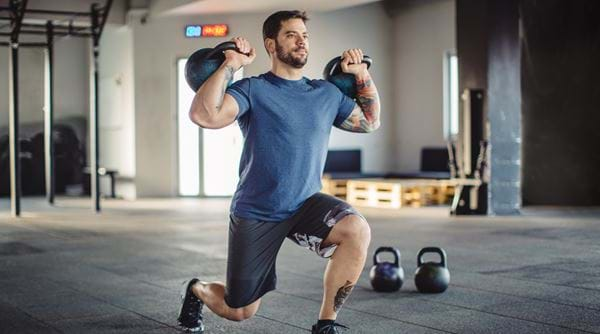Why you’re not making progress in the gym

Do you feel like you look no different from when you first started working out? Have you hit a plateau and it just seems you can’t make any more progress no matter how hard you try?
If it’s a yes to either one of those questions then you’re on the right page! Let me explain the two most common factors as to why you may have hit a plateau, and what you can do to overcome it.
1) You are not progressing your workouts
Are you’re still lifting the same amount of weight? Or are you performing the same amount of sets and repetitions? Or if weight training isn’t your thing, maybe you’re running at the same pace on your treadmill sprints? Whatever exercise you are doing, if you’ve been doing the same activity at the same intensity for a good few weeks now then you need to start making some changes. Your body is good at adapting to training stimulus so if you aren’t making your workouts more challenging progressively, every now and then, your body will stay the same.
So how can you progress your workout?
When it comes to your workouts, there are 3 main ways you can progress them:

- Increase the amount of weight lifted: Start off by making small increases to the weights you use and stay within your rep ranges. In our gyms we have small 1.1kg and 2.3kg plates you can use to add to your working weight to create fractional increases. If you make huge jumps in the amount of weight lifted, this can compromise your technique and in turn, your results and increase the risk of injury. So if you find that you lose your technique with the new weight range, don’t be afraid to lower the weight slightly. Remember, quality is better than quantity!

- Increase the number of repetitions performed: If you feel that increasing the weight will be too challenging then all you need to try first is performing 3-5 more repetitions in each set. So for example, if you usually use the leg press machine with 40kg for 3 sets x 10 repetitions, next time, add an extra 5 repetitions so you do 40kgs for 3 sets x 15 repetitions. Alternatively, you can even add another set meaning you would perform 4 sets x 10 repetitions.

- Decrease your rest time - This may seem like the easiest option of the other two tips but actually, this can be quite challenging. Rest is really important in between your sets but you can also use it to your advantage to progress your workout. Again let’s say you are performing your new working set on the leg press at 40kg for 4x10 and it starts to become easy with 1:30 minutes rest in-between, all you need to do is take that rest down to 1:00 minute. That’s it!
You’ll be surprised how hard it becomes once you implement some of the above in your workouts.
Your comfort zone is a nice place but nothing ever grows there. If you do not constantly challenge your body and give it new tasks to conquer then you will not make any progress.
2) You are not in an energy deficit
If your goal is to lose weight and reduce body fat then this is a big contributor to your progress. Many of us adopt a Monday - Friday clean eating approach and then have a huge cheat on the weekend - don’t get me wrong there is nothing wrong with letting your hair down but you could be sabotaging all of your efforts from your weekend binges.

Let’s crunch the numbers for a second so I can explain what effect a binge weekend can have on your energy balance. So let’s say I have a client called Sally, who wants to lose weight but loves going out for meals with friends on the weekend. After I do my calculations on my client’s current body stats, in order for Sally to lose weight at a healthy pace and get towards her goal she needs to hit a daily calorie goal of 2,100. If we check her food diary, Monday - Friday she sticks to 2,100 calories but when the weekend comes, she is consuming at least 3,000 calories. No wonder she wasn’t losing weight before!
Since Sally says she loves to eat out on weekends, and because it’s important to have a flexible and realistic diet that fits with your lifestyle, I suggest to Sarah what we could give her a weekly calorie total instead of a daily calorie total to help her maintain a deficit.
By looking at total energy balance across one week instead of daily, we can manipulate the calories she has during the weekday by lowering this slightly, so we can increase the amount of calories she can have during weekends to enjoy her meals out, without being in a calorie surplus.
Here’s how that would play out:

Whilst calorie tracking can seem obsessive and too much hassle for some people, and I can relate to that, if you don’t keep track of what is going into your body then it’s quite easy to eat more than you need. You don’t have to track for the rest of your life but if you have hit a plateau and you don’t know how much your energy intake is on a daily basis, I would strongly recommend you speak to a coach about it and get some guidance. This approach creates some flexibility in the diet and also meets the needs of Sally’s lifestyle but this is not the only way to go about achieving calorie targets, there are other ways. If calorie tracking really isn’t for you then you can try another technique to monitor your food intake using your hands.
The most important way would be to use an approach which suits your needs, matches your lifestyle and goals.
If you want some help on how to track your energy intake and calculate how much you require to shift past the plateau then please feel free to get in touch with me or speak to one of your personal trainers at your local Pure Gym.


